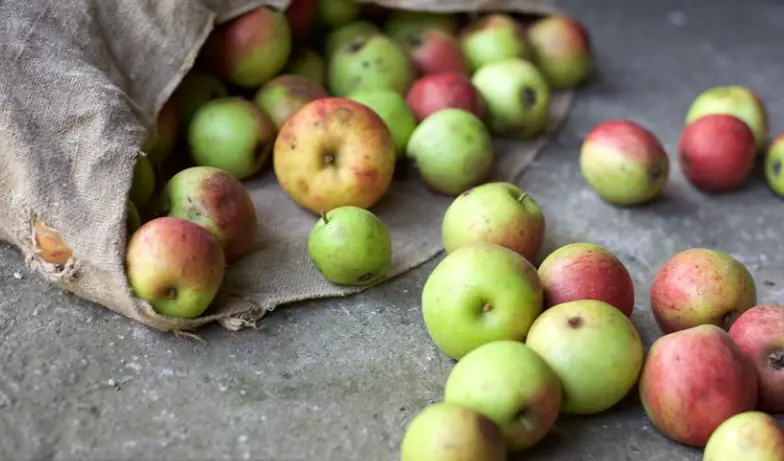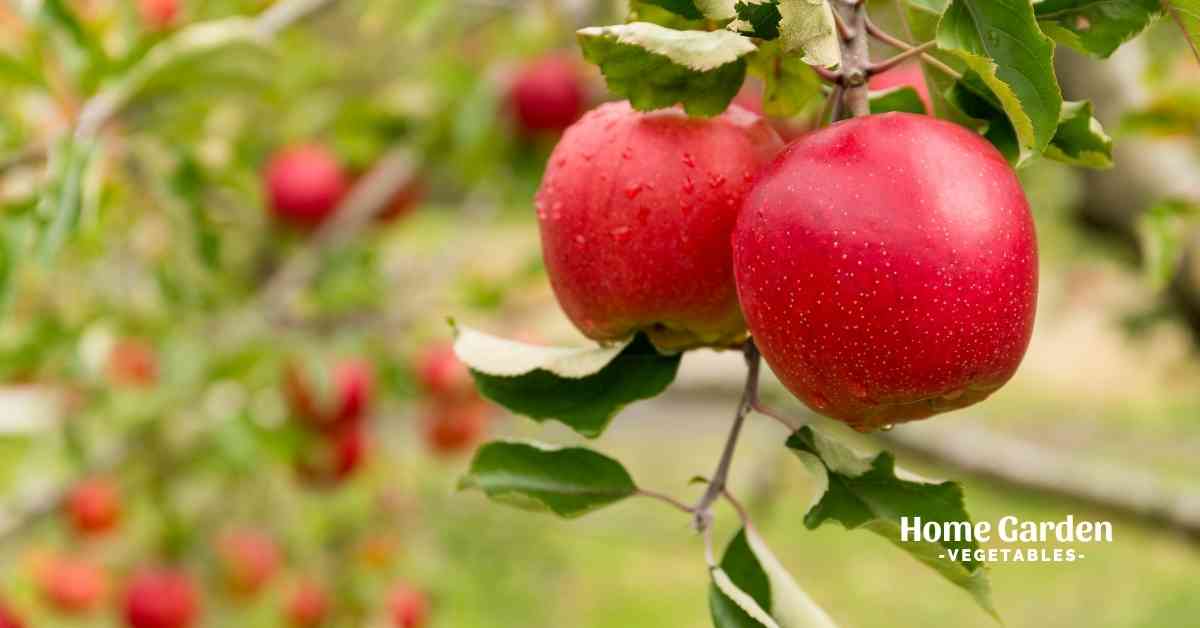Apple doesn’t require an introduction. Simply saying that an apple a day keeps the doctor away suffices. The fact that apple trees are so enormous and take up so much room means that they are often seen in gardens and farms.

When it comes to edible houseplants, fruit trees are a great option. There are a few dwarf varieties that will thrive in a large pot in your living room, even though many grow enormously in the wild since they are native to areas with year-round sunshine. It is feasible to plant fruit trees in the comfort of your own home! Even if purchasing dwarf types (for size) and mature trees that are ready to eat sooner is preferable.
Reader Poll: What online courses would interest you?
Bright, full light for around six to eight hours a day all year long is required by most fruit trees to produce fruit. Grow lights or a fruit tree in the summer months may be an option if you don’t have enough room in your house for a full-time fruit tree. In addition, remember to choose a container with holes in the bottom to prevent water buildup that might lead to root rot.
Proper care and circumstances (and a trusted nursery from which to get them!) are essential, but we are confident in your ability to succeed. Here’s some information on how to plant apple trees in a house.
1. Choose A Variety
An apple tree conjures up images of huge, bushy trees with plenty of room to grow. Yes, the majority of apple trees do fit inside this picture. There are, however, some dwarf types that may be grown in an indoor environment.
Subscribe to our newsletter!
You must graft all of your plants onto a dwarfing rootstock, regardless of the cultivar. They are grafted to regulate their height, growth, and fruit output, as well as their resilience to disease and pests. You won’t be able to manage the growth of your apple plant if you grow it from seed.
The rootstocks M27, M26, Bud9, G16, and M9 are some of the most often suggested for dwarf grafted apple plants. These types don’t become taller than 8 inches, making them ideal for containers.
Lastly, the process of pollination is critical. Cross-pollination is required for apples, therefore you’ll need to acquire at least two apple trees. To avoid this, you’ll need to acquire a self-fertile plant.
2. Choosing A Right Pot
Since the container’s size is entirely dependent on the plants’ dimensions, this is a critical stage in the growing process. You’ll begin with a small container and eventually need to upgrade to a larger one as your trees develop.
Choose a pot that is either 18-22 inches (46-56 cm) deep or has a capacity of 10-15 gallons when you begin (38-57 L.). Smaller containers may, of course, also be used, but larger is usually preferable. Drainage holes should be present in the container.
Apple trees may take up to six years to begin bearing fruit before they reach their full-size potential. Change the size of the container next year if you began with a tiny one to preserve the roots and avoid bonding.
3. Soil
Apple trees need to flourish on soil that’s rich in nutrients, well-drained, and well-spaced. When growing in a container, you have more control over the soil’s quality than you would if you were doing it outside. It’s possible to get organic potting soil with a slightly acidic to neutral pH. (6-6.8).
4. Location
Apple trees, like the majority of other fruit trees, need direct sunshine to thrive. Make sure your plants receive at least six hours of direct sunlight in the winter and fall, and six hours of shaded sunlight throughout summer. Early mornings are the ideal time of day for exposing apple trees to the sun’s rays Despite their ability to withstand very low temperatures, these plants are unable to withstand extremely high temperatures.
5. Keeping The Plants Watered
It’s important to water these plants regularly. When flowers are in bloom, watering them once a week is plenty. Once the flower buds have developed, watering should be reduced to once every two weeks.
Pay close attention to how you water your trees. Do not water your plants from the top, since this can encourage the formation of powdery mildew. As a general rule, it’s best to keep trees well-watered, but don’t overdo it. Toxic root rot may be caused by over-irrigation.
6. Overwintering As Well As Fertilizing
This time of year, apples require a steady supply of fertilizer. Balanced liquid fertilizer may be applied every two weeks at half-strength. Fruit fertilizer may be used after the growth season. Stop feeding your plants in winter since they fall into dormancy.
Plants fall dormant to survive the winter and the subsequent drop in temperature. As a result, all growth will be halted until springtime. Your plant’s container may be helped, though, by covering it in bubble wrap.
7. Thinning And Pruning
Pruning is necessary for all types of apple trees, particularly if you’re growing them inside and they have an influence on the overall appearance of your home. During the summer months, inspect your trees for dead, damaged, or diseased branches and remove them.
Flowering and fruiting may begin within two to three years after planting. To put the plants’ energy into growth, remove all of the flowers as soon as they begin to blossom.
8. Pests And Disease
Pests will attack your apple trees, no matter if you’re growing them in a container or in your backyard. Anthracnose, powdery mildew, brown rot, apple blossom weevil, and scab are among the most serious pests and illnesses.
9. Harvesting
A change in color, whether red or yellow, indicates that your apple is ready for harvest. While this method is the most reliable, it’s not the only one. This occurs every 7 to 8 years, generally around June.
Conclusion
It’s not necessary to have a whole orchard when you plant apple trees: Dwarf apple trees may be planted in even the tiniest of yards. “Dwarf” fruit trees, which normally grow to six feet in height, may also be cultivated in big pots. Standard fruit trees may reach 20 feet or more in height, whereas “semi-dwarf” trees are smaller and reach 10 to 15 feet in height.

